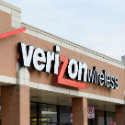Verizon's 2020 hopes were shattered by a coronavirus pandemic that also nixed family vacations, school plays and plenty of other best-laid plans. This summer may be different.

The headlines are undoubtedly music to the ears of Verizon's 5G executives:
As Americans begin eyeing a return this summer to once-crowded venues like football stadiums and concert arenas, there's a chance that Verizon's early 5G investments might finally pay off.
"Verizon flips the switch on 5G at popular destinations just in time for Memorial Day," reads a Verizon press release this week.
"As people start to re-engage in normal activities like vacationing, spending the day at the shore, and traveling again, the power of Verizon's 5G Ultra Wideband will be on full display," Verizon CTO Kyle Malady said in the release.
Why might Verizon's Malady in particular be celebrating a return to normalcy? In part it's because Verizon bet heavily on a flavor of 5G that's ideal for indoor locations like hockey rinks and soccer stadiums. When those venues went dark last year, so too did Verizon's ability to show off the blazing-fast speeds of the 5G networking technology it initially bet on.
Years of planning
At the center of Verizon's early 5G strategy is millimeter wave (mmWave) spectrum. Until a few years ago, that spectrum was mostly unused due to the fact that transmissions in the band were mostly limited to distances of a few thousand feet under the best of conditions. Mobile operations in mmWave spectrum – such as users wandering around the football stadium in search of a frosty beverage – were unheard of.
But Verizon saw an opportunity. As technologists worked to put the finishing touches on an initial 5G standard that would work in mmWave spectrum, Verizon bought billions of dollars worth of mmWave spectrum licenses and assembled a cadre of vendors that could make equipment for transmissions in the band.
The efforts bore fruit in 2018, when Verizon commercially launched fixed wireless operations in mmWave spectrum in tiny parts of a handful of cities. A few months later, it launched mobile operations in the spectrum in a few locations.
Throughout 2019, Verizon worked with the NFL and other venue owners to outfit large indoor locations with mmWave networks – places where mmWave's diminutive propagation characteristics would be an advantage rather than a drawback. With mmWave-capable smartphones hitting the market throughout 2019, the summer of 2020 was primed to allow Verizon to demonstrate all the fancy new services users might expect from 1Gbit/s mmWave networks coupled with edge computing-powered low latency services. Initial demonstrations included augmented reality player statistics, real-time video feeds and other such services.
But it was not to be. Verizon's 5G hopes were shattered by a coronavirus pandemic that also nixed family vacations, school plays, noisy rock concerts and plenty of other best-laid plans.
A 2020 do-over
This summer, however, Verizon is hoping that things will be different amid widespread vaccinations.
"As we see crowds start to grow, traffic at airports and train stations rise and events start to come back, we will be ready to provide the world-class 5G experience our customers want," Verizon's Malady said in a release.
Indeed, Verizon is planning a handful of 5G services at the Indianapolis Motor Speedway for the Indy 500 auto race this weekend. For example, startup AiFi is promising an autonomous convenience store at the event – cameras will track pre-registered shoppers and charge them for what they leave the store with – that will work on Verizon's mmWave 5G network. Separately, the operator will broadcast 360-degree video streams of racers passing Turn 4 and Pit Row via its 5G network.
Importantly, the Indy 500 is planning to have 135,000 fans in attendance, according to reports, or roughly 40% of the raceway's total capacity.
Related posts:
— Mike Dano, Editorial Director, 5G & Mobile Strategies, Light Reading | @mikeddano
About the Author(s)
You May Also Like



.jpeg?width=300&auto=webp&quality=80&disable=upscale)







